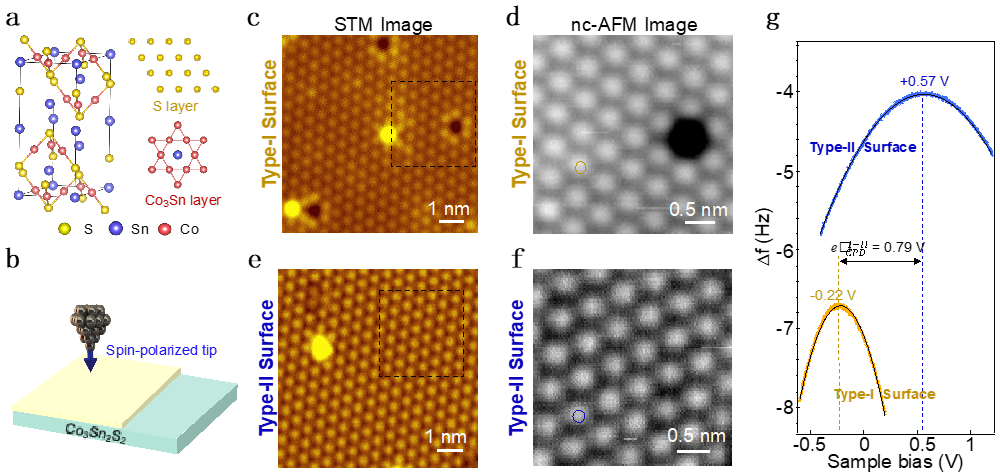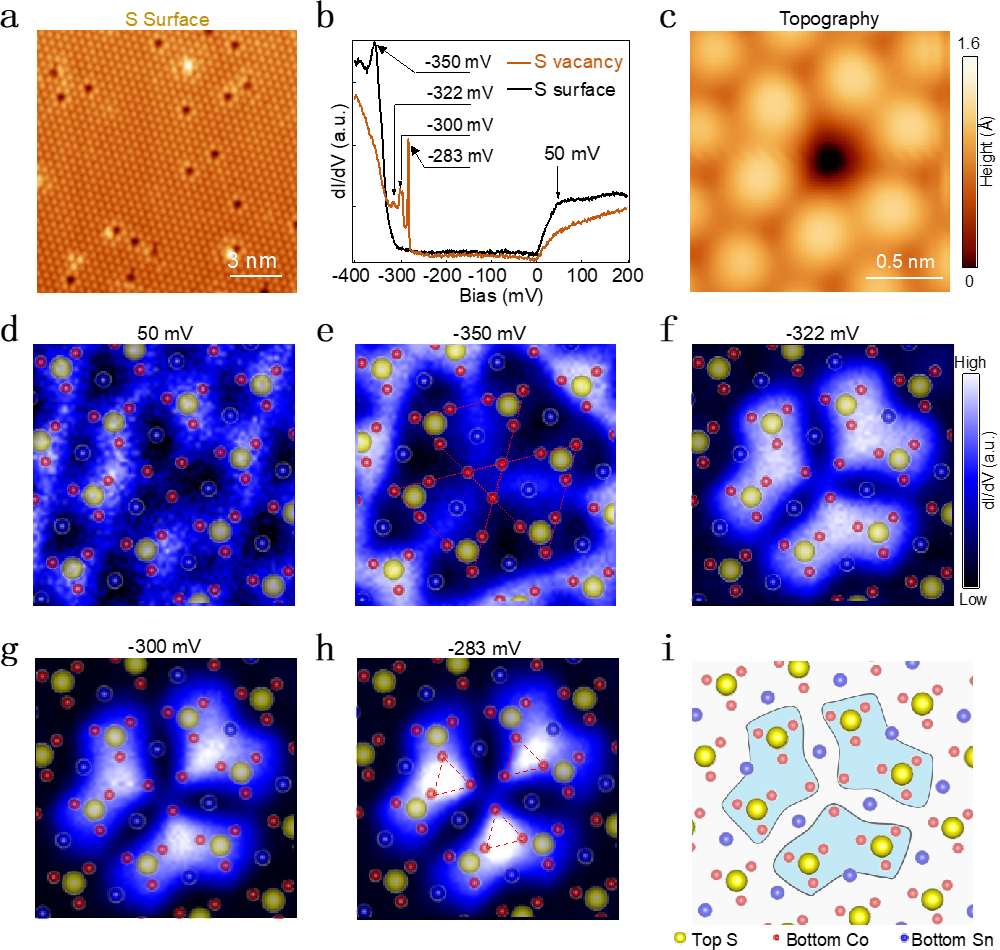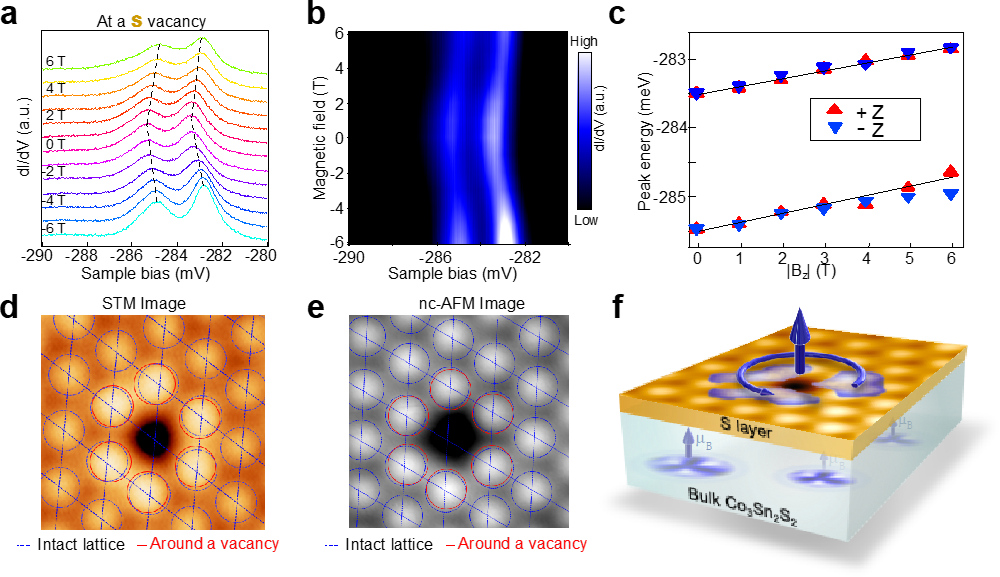Localized spin-orbit polaron in magnetic Weyl semimetal Co3Sn2S2
Date:12-11-2020 Print
The defect engineering of magnetic quantum materials and the regulation of local spins are expected to build practical quantum spin devices in the future, which is currently one of the hotspots in condensed matter physics research. The transition metal based kagome lattice compounds have merged recently as a novel materials platform for unveiling and exploring the rich and unusual physics of geometric frustration, correlation and magnetism, and the topological behaviors of the quantum electronic states. These are layered crystalline materials where the transition metal elements occupy the vertices of the two-dimensional network of corner-sharing triangles, supporting electronic band structures with Dirac crossings and nearly flat bands with strong spin-orbit coupling. These prototype materials exhibit different magnetic ground states, such as ferromagnetic, antiferromagnetic and paramagnetic which were wildly studied these years. Defect excitations at atomic vacancies and adatoms, which are known to provide deeper understanding and reveal new physical properties of correlation topological materials, have yet to be explored in these kagome lattice materials.
As the first combination of both theoretical prediction and experimental evidence Weyl topological system with intrinsic magnetism, Co3Sn2S2 has been discovered to exhibit novel phenomena such as surface-termination dependent topological Fermi arcs and disorder-induced elevation of intrinsic anomalous Hall conductance, making it an ideal platform to study the defect excitations and its correlation to the topological properties of the Weyl semimetal. Scanning tunneling microscopy/spectroscopy combining with spin-polarized tip is a powerful tool to characterize the local excitations at atomic level. Prof. Hong-Jun Gao's research group has solid research foundation in these two technologies and their research, and has achieved a number of international top-level research results.
Recently, Prof. Hong-Jun Gao's group (N04 group) cooperated with Prof. Enke Liu (from M05 group) and Prof. Ziqiang Wang (from Boston College, USA). Using ultra-low temperature scanning tunneling microscopy/spectroscopy (STM/S) with spin-polarized tip and low temperature atomic force microscopy (AFM), they first studied localized excitations from single vacancies of magnetic Weyl semimetal Co3Sn2S2. They used non-contact AFM and local contact potential difference measurement to identify the S-terminated surface from two typical cleaved surfaces. Then they reported the discovery of bound magnetic polarons nucleated around single S-vacancies in nearly non-magnetic S surface by spin-polarized STM. They emerged as bound states in the conductance map with a three-fold rotation symmetry. Applying external magnetic fields up to ±6 T normal to the surface reveals that the binding energy of the localized magnetic polaron linearly increases as a function of the field magnitude regardless of the field direction. This anomalous response indicates dominant orbital magnetization contribution to the local magnetic moment (~ 1.35 μB). Contributed by the appreciable magneto-elastic coupling around the S-vacancy, they termed this new excitation as a localized spin-orbit polaron (SOP). The significant diamagnetic orbital magnetization has a possible topological origin associated relating to the diamagnetic circulating current around the S-vacancy. The SOPs observed on nearly non-magnetic atomic layer of Co3Sn2S2 can enhance magnetism and more robust time-reversal-symmetry-breaking topological phenomena.
Given the role of magnetic dopants in dilute magnetic semiconductors, the vacancy-induced SOP may provide a new path toward generating magnetic moments in correlated nonmagnetic topological semimetals. Furthermore, the discovery of the localized SOP opens a novel route for manipulating the magnetic order and the topological phenomena in Weyl semimetal Co3Sn2S2. Controlled engineering of the SOPs may pave the way toward practical application in functional quantum devices.
Yuqing Xing, Dr. Jianlei Shen, Dr. Hui Chen and Dr. Li Huang contribute equally to this work. Prof. Enke Liu, Prof. Ziqiang Wang and Prof. Hong-Jun Gao are the corresponding authors. Prof. Enke Liu and his team provided high quality crystal of Co3Sn2S2. Prof. Ziqiang Wang provided theoretical support. This work was financially supported by National Natural Science Foundation of China (61888102,11974422, 11974394), the National Key R&D Program of China (2016YFA0202300,2017YFA0206303, 2018YFA0305800, 2019YFA0308500, 2019YFA0704900), and the Chinese Academy of Sciences (XDB28000000, 112111KYSB20160061). This work entitled "Localized spin-orbit polaron in magnetic Weyl semimetal Co3Sn2S2" was published online in Nature Communications 11, 5613 (2020) on the 5th November 2020.
Link: https://www.nature.com/articles/s41467-020-19440-2

Fig. 1 Identification of S-surface of Co3Sn2S2 using nc-AFM/STM

Fig. 2 Localized excitations around a single S-vacancy at the S-terminated surface of Co3Sn2S2

Fig. 3 Spin-polarized bound states at a single S-vacancy

Fig. 4 Anomalous Zeeman shift of the bound states and spin-orbit polaron at a single S-vacancy


